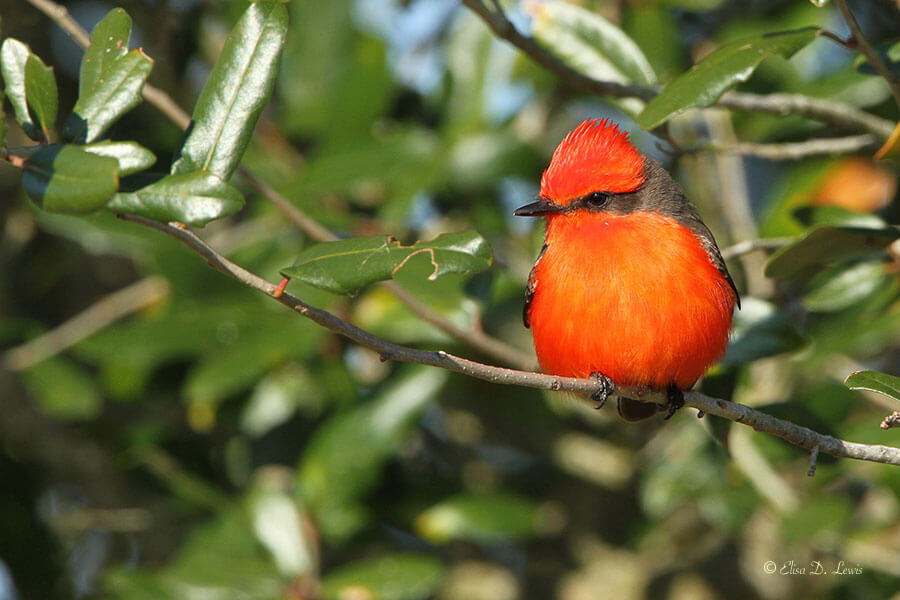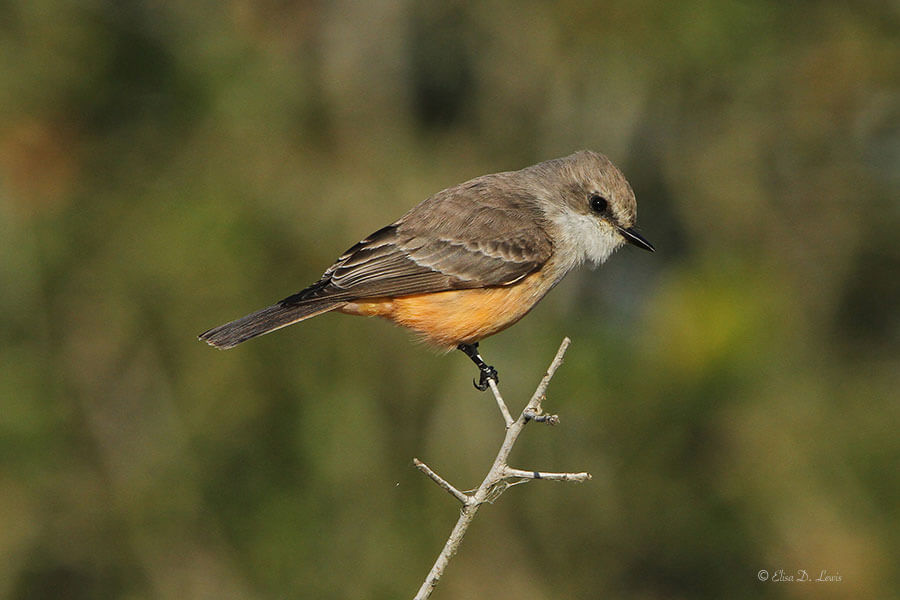Vermilion Flycatchers are some of our most anticipated fall visitors along the Texas Gulf Coast. Visiting populations migrate east, not south, for the winter bringing the colors of the West with them (their U.S. breeding range includes CA, NV, AZ, NM, and western and central TX). This flycatcher’s scientific name says it all – Pyrocephalus rubinus (a reference to the spectacular coloration of the male). As if the generic name, Pyrocephalus, or “fire head,” wasn’t enough, the specific name, rubinus, emphasizes the redness of the bird. One of a few types of so-called “firebirds,” the Vermilion Flycatcher is not only eye-catching, but is energetic and exciting to watch, just like other flycatcher species. Three vermilions – a male, female, and juvenile male – thoroughly captivated us last weekend at Anahuac National Wildlife Refuge (NWR) headquarters.

The female provided the best viewing opportunity as she perched within 12-15 feet of me. I had the luxury of settling in and studying her behavior for almost an hour. Between bouts of preening, she tracked insects as they flew by – sometimes it appeared as if she were watching a tennis match. Why wasn’t she going after them? Then, all of a sudden, she took off and grabbed one out of the air. What was it about that last fly by? Was it the insects’ speed, trajectory, size, or proximity that finally made the difference? Or some combination? And then again: track, track, track, go! It reminded me of playing duck, duck, goose as a child. As I went around the circle, patting the heads of my classmates, I was calculating . . . who could I outrun?
Was the flycatcher calculating? The literature seems to suggest that the Vermilion Flycatcher always gets his/her prey. If the initial attack is unsuccessful, the prey “may be pursued in an erratic acrobatic chase until capture” (Wolf and Jones 2000, 5). Though the research sample is small, it does makes sense from an evolutionary perspective. Individuals most efficient (or dogged if necessary) at capturing prey (we could call it flight/eye coordination), will most likely live the longest and leave the greatest numbers of offspring edging the overall average toward a more and more efficiently predatory population.
When watching flycatchers, one can be excused for anthropomorphizing. They often cock their heads with apparent curiosity, and just about ooze charm. Flycatchers seem to delight in taking a particularly big or juicy bug–male Vermilion Flycatchers have been seen presenting potential mates with large, showy gifts–like butterflies. That would be an awesome image indeed — the handoff of a nuptial gift of an insect gem from a male Vermilion Flycatcher to his lady. Stay tuned! I will be watching for it next season in their breeding territory.

References
Wolf, B.O., and S.L. Jones. 2000. Vermilion Flycatcher (Pyrocephalus rubinus). In The Birds of North America, No. 484 (A. Poole and F. Gill, eds.). The Birds of North America, Inc., Philadelphia, P.A.
© 2012 Elisa D. Lewis. All rights reserved.
No text or images may be duplicated or distributed without permission.